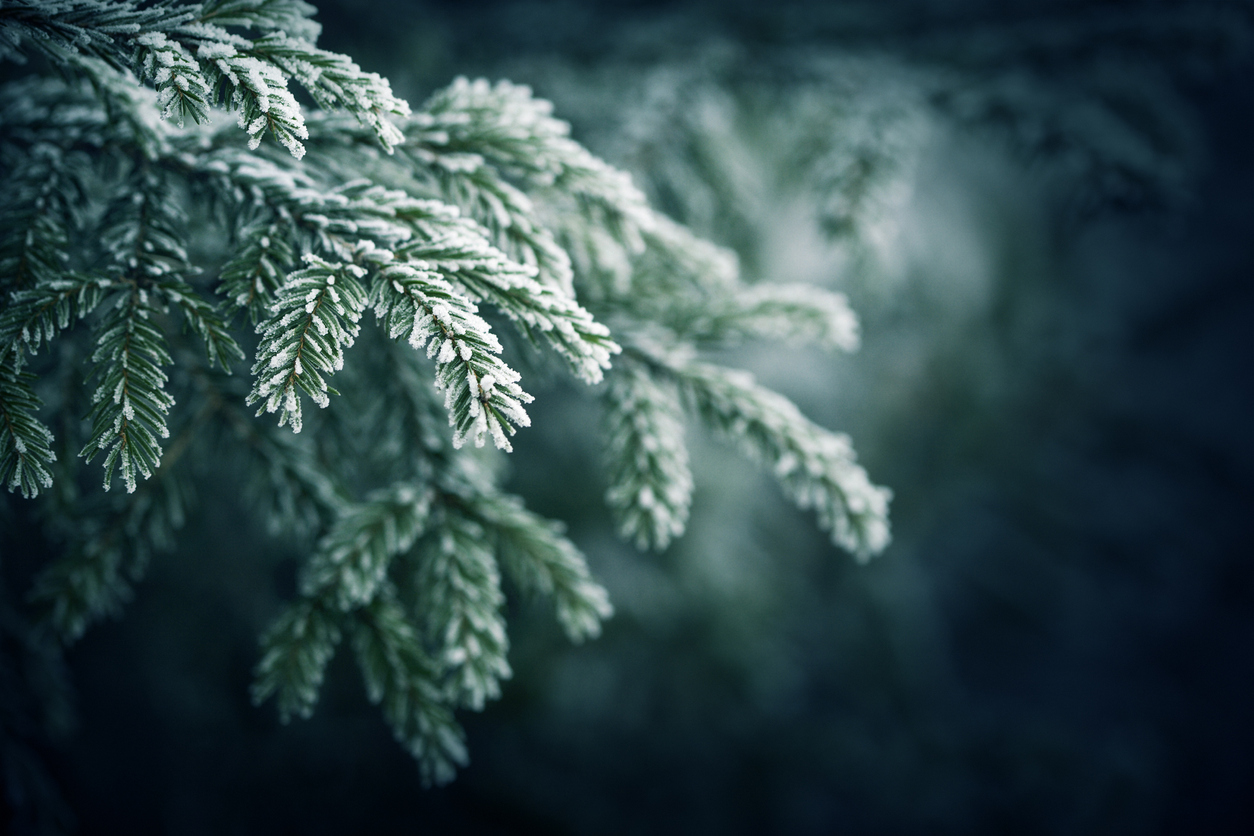All things considered, Atlanta, Georgia (like most of the rest of the state) has winters decidedly on the mild side of things. But that doesn’t mean we don’t see occasional deep cold snaps, decent snowfalls, and ice storms. Harsher winter weather can definitely do a number on your property’s trees, so it’s essential to know how to protect and evaluate them—and know how to care for or otherwise address winter-damaged specimens.
Here at Excel Tree Care, we’re proud to offer first-rate Atlanta tree removal, pruning, and maintenance services. If you have concerns about weather-impacted trees on your lot, don’t hesitate to get in touch! In this post, we’ll run through some seasonal tree-care concerns this time of year, and close things out with more information on how we can help.
Winter Weather Impacts on Trees
 The two main categories of winter-weather issues when it comes to trees are (1) mechanical damage from snow, ice, and/or wind and (2) the impacts of freezing or subfreezing temperatures.
The two main categories of winter-weather issues when it comes to trees are (1) mechanical damage from snow, ice, and/or wind and (2) the impacts of freezing or subfreezing temperatures.
Trees burdened by a load of wet snowfall or glazed over with ice after a freezing-rain event may drop branches or even topple. A major frontal storm bringing gale-force winds can also, of course, break off limbs or upend whole trees. This kind of mechanical breakage and uprooting is, obviously, immediately obvious. (If a big branch or tree falls on your car or house, we’d say the damage is a little too in-your-face obvious!)
Tree damage from frost or subzero temperatures is often much more subtle. Ice infiltrating vulnerable plant tissues can cause localized die-off of bark, branches, buds, and leaves. While the results are sometimes apparent pretty quickly – wilted or black – colored foliage, for example—other visible signs may not manifest for awhile: maybe not even until spring, when a tree fails to leaf out or flower. Bark splitting or frost cracks may result from extreme cold, major temperature fluctuations, or freeze/thaw cycles.
Extensive freeze damage to twigs, buds, bark, or the root system can result in a tree’s death. Trees that have properly acclimatized to colder weather on their usual seasonal cycle are less prone to injury, but early fall cold snaps ahead of this cold acclimation process – or late cold snaps during spring budding-out – can be deleterious.
How to Avoid Frost Damage & Otherwise Protect Trees From Winter Weather
Choosing trees hardy to your climate zone and siting them properly go a long way toward avoiding major winter damage. Assess your property’s microclimates, keying into cold pockets (often low places or spots out in the open) and thermally buffered sites. Trees planted close to (though not too close!) exterior walls can benefit from radiated and reflected heat. Less-hardy trees may better survive in the lee of a windbreak.
Test your soil to make sure you’re meeting your trees’ nutritional demands: Healthy trees are more resilient in the face of cold weather. Avoid pruning or priming a tree with nitrogen-rich fertilizer in the late fall, as these actions can result in the production of new, tender growth highly vulnerable to winter chill.
Ahead of cold weather, cover vulnerable plants, including sapling trees. Mulch can also insulate the rootstocks and bases of trees in the face of freezing temperatures. Watering trees before cold snaps can also be advantageous, given moister soil more effectively absorbs heat.
Before the winter, evaluate trees for dead or dying boughs or subsidiary trunks to lessen the odds you’ll be dealing with snow-, ice-, or wind-induced breakage or collapse.
Assessing & Dealing With Damage From Winter Weather
As we’ve mentioned, some signs of winter-weather impacts to trees are obvious, from drooping, browned leaves and twig tips to felled canopies. But a lot of frost damage to trees takes up-close scrutiny and may not be apparent for days, weeks, or even months.
For the most part, practice restraint when attending to potentially frost-damaged trees. A lot of this kind of damage is not the end of the world. Depending on the extent of the injury, trees may compensate for frost-killed buds with followup growth or simply normal budding on unaffected twigs. Trees can often effectively self-heal when it comes to split or cracked bark by callusing over with new summerwood growth.
Delayed or nonexistent leaf-out or flowering can indicate a frost-killed branch or tree. Damage to bark can be evaluated by scratching the outer layer to look for green beneath, though this is best left to springtime.
Carefully done pruning can help treat frost- or storm-impacted tree limbs. Trees dying back from freeze damage or showing major breakage from snow or ice loads may need to be removed. Here at Excel Tree Care, we offer homeowners throughout Atlanta’s north metro area highly skilled, Leave No Trace-emphasizing pruning and tree-removal services—including 24-7 emergency services.
Turn to the Excel team for winter tree care in Atlanta! You can get in touch at (404) 964-6508 or by email via tyler@krishnav57.sg-host.com.

